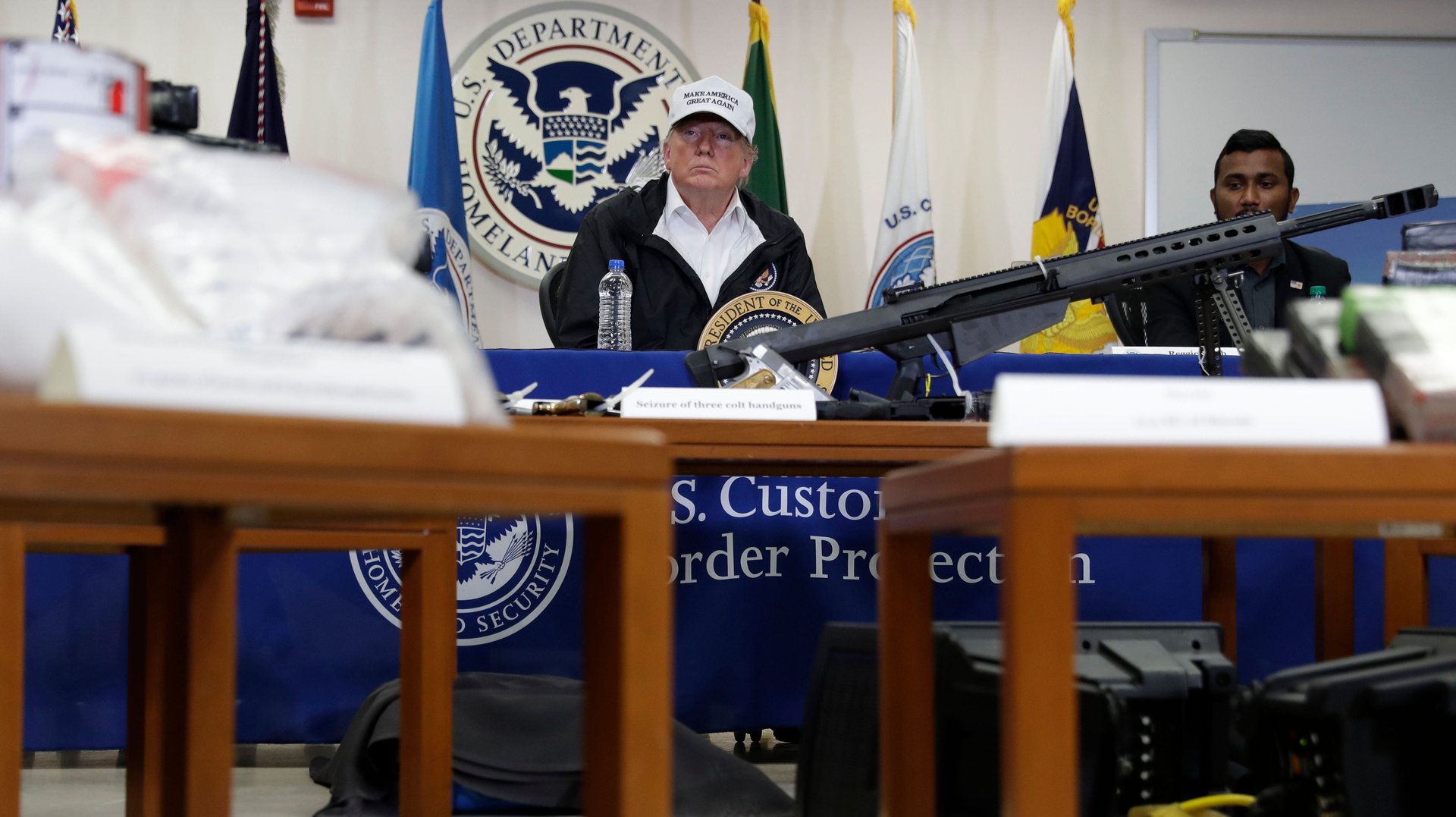Border Patrol agents unintentionally debunked Trump’s case for the wall
During a South Texas visit, Donald Trump again stated his case that a wall along the Mexican border is the only way to prevent criminals from sneaking into the US, part of his renewed campaign to get funding for the project.


During a South Texas visit, Donald Trump again stated his case that a wall along the Mexican border is the only way to prevent criminals from sneaking into the US, part of his renewed campaign to get funding for the project.
The US president made his pitch today (Jan. 10) at a roundtable on border security, flanked by mounds of seized drugs, cash, and weapons that he presented as evidence of the border crisis he claims his proposed physical barrier would stop.
Except many of those items were actually intercepted at legal ports of entry, not the in-between places Trump wants to wall off.
It’s yet another reality check on Trump’s pet project. Experts have been pointing out the logistic and legal impracticalities of building a wall across the entire length of the US-Mexico border since then-candidate Trump made it a keystone campaign promise.
They have also argued that a physical barrier will do little to address the very real immigration and drug trafficking problems the US is facing. The showcase prepared by Homeland Security officials for Trump’s visit shows why.
Take the 117 kilos of methamphetamines and 12 kilos of heroin they neatly piled up. Officials at a port of entry discovered them after screening a commercial load with X-ray technology and sniffing dogs. Statistics show stashing illegal cargo in vehicles and driving through ports of entry is the most common way of smuggling in meth and heroin, drugs that are fueling an overdose epidemic in the US.
Also seized at a port of entry: Three gold-plated guns encrusted with diamonds.
In another exhibit, DHS agents touted their discovery of a tunnel, built under a border section that is already protected by a wall. At least one seizure, of an AK-47 assault rifle, happened on the US side of the border, after officers spotted a nervous driver headed into Mexico.
To be sure, there were also several examples of trafficking activity that likely happened between ports of entry. The immigrants discovered crammed into cars, and in one case, in a horse trailer, likely crossed the border illegally.
But that’s not the most pressing problem for DHS at the moment. A recent bump in border-crosser apprehensions, which are often used as a proxy for illegal immigration, is mostly due to a rise in the number of Central American families and unaccompanied minors who are seeking asylum in the US. Many are fleeing worsening political instability, as well as decades-worth of poverty and corruption. Large immigrant caravans that started out as political protests are also making the dangerous trek through Mexico safer, drawing more people.
The Trump administration has tried to funnel them through ports of entry, where they are put on long waiting lists. Many migrants are following that process. Others are entering illegally and turning themselves in to Border Patrol agents, who must refer immigrants who say they’re afraid to return home for screening to determine if they are eligible for asylum.
Regardless of whether they arrived legally or illegally, American authorities are obligated by US and international law to hear their asylum requests. A wall wouldn’t do away with that responsibility. It likely wouldn’t even deter migrants from crossing illegally. In the San Diego area, caravan members have been climbing over and under existing fencing.
Abandoning his wall idea would be politically damaging for Trump, though, especially after forcing a government shutdown—now into its third week—over funding for it. But even he is starting to backtrack on his grandiose vision of it.
Today, for example, he said that his repeated claims that Mexico would pay for the wall never meant that the US would receive a check for billions of dollars. Rather, he explained, Mexico will cover the cost through the gains the Trump administration extracted from that country via the US-Mexico-Canada agreement, the trade deal that is supposed to replace the North American Free Trade Agreement. (It still needs to be approved by Congress.)
He’s also prepared to give up on the the signature name he assigned to the project. “They said we don’t want a concrete wall. I said that’s OK, we’ll call it a steel barrier,” he said.